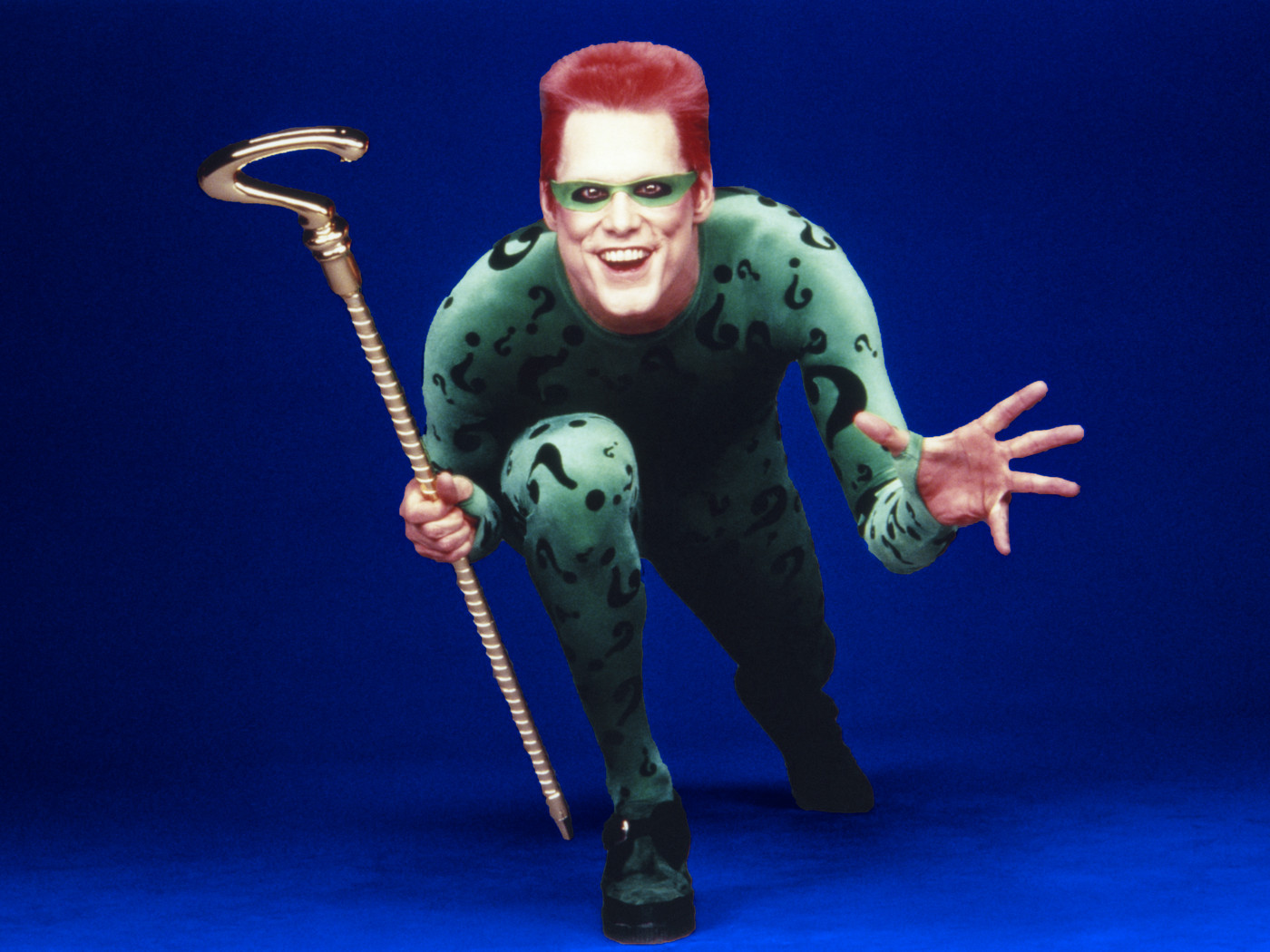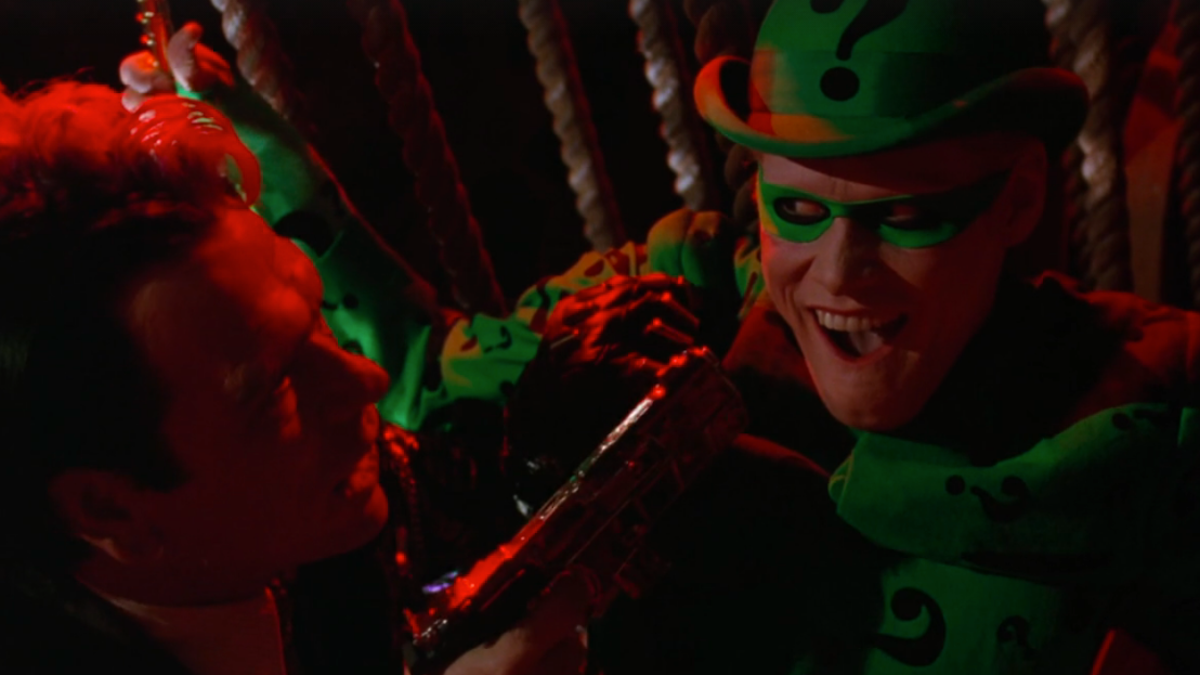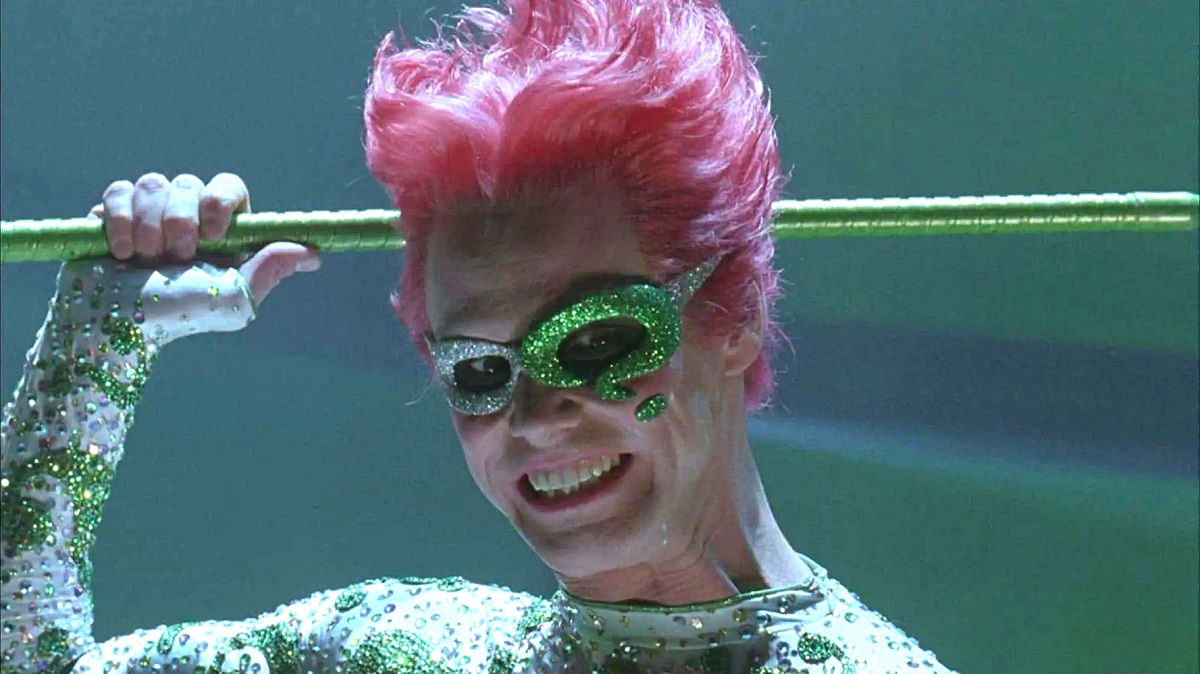The current DC Comics film lineup, particularly Batman, is rife with controversy and debate. With ten live-action feature films in the can and many more to come, Batman is unquestionably the most famous, or at least the most recognizable, superhero on the big screen. A decade ago, when at least two of Christopher Nolan’s three Batman pictures achieved near-universal acclaim, things were different.
It is 1995, and Batman mania has returned to the streets. With two blockbuster films under its belt, Warner Bros. hoped to retain the momentum of its film franchise, but with a newer and darker approach. Tim Burton may have put the caped crusader back into a dark and brooding vigilante from his campy TV hero days.
Despite this, the next film was a soft reboot in terms of casting and production. Despite the fact that it is not one of Bruce Wayne’s best big-screen outings, Batman Forever is the Dark Knight’s most neglected picture and needs greater attention. Despite its box office success, the film has received mixed reviews since its initial release in 1995.
It is both dark and gothic and disgustingly decadent, as well as bright, cheerful, and conservative. Batman Forever has a propensity of reappearing at some time in the series. Some say it is a film that is undervalued. One person, in particular, believes it is the lowest point in the history of the Batman film franchise.
Sandwiched between Tim Burton’s Batman movie and the trainwreck Batman and Robin, the 1995 summer blockbuster is possibly one of the most neglected Batman films. The heroic Caped Crusader is played by Val Kilmer in the third installment of the live-action film series, which avoids the bleak tone of its predecessors.
Unfortunately, the third installment in the series focuses more on the ridiculous antagonists. Batman Forever is not the best or worst film about the caped crusader of Gotham City, but it is also not the worst. And, while the majority of people moan about how horrible the film is, you rarely hear people acknowledge the film’s excellent aspects.
Why Batman Forever’s Riddler Deserves More Love!

Tim Burton’s Batman films are regarded as “pioneering,” everyone adores Christopher Nolan’s version, and Batman & Robin is a camp classic…but Batman Forever receives little acclaim, despite being fantastic. To begin, Val Kilmer has replaced Michael Keaton as Bruce Wayne. He gives a CHAOTIC, aggressively ’90s spirit to the characters. Schumacher’s Batman films return to the ridiculousness of the 1960s T.V. series, from the Bat suits with nipples to the corny language. In its initial edit, the picture was on the verge of earning an R rating rather than a PG-13. McDonald’s promoted the film with a Happy Meal fast-food item.
After seeing the completed result, parents and Christian groups chastised McDonald’s for advertising a distressing video to their children. While Schumacher’s films were cartoonish, Batman Forever featured a good mix of light and dark aspects, with the darker sections coming from Val Kilmer’s troubled hero dealing with a dual identity and the emotional loss of his parents. By mixing components of Burton’s vision with the shenanigans of the 1960s television series and finishing with 1995, you get a pleasant, somewhat cheerful, and aesthetically attractive film.
Although the first two Batman films were huge box office successes, there was a perception following “Batman Returns” (1992) that the series had become too dark and depressing. Batman was a reclusive neurotic. His opponents included the deformed Penguin, nurtured in sewers as a youngster. The films attempted to blend superheroes with film noir. That didn’t work since the dark point is that there are no heroes. Furthermore, the significant villains’ cartoonish conduct isn’t as horrible as you recall.
The film follows the tried-and-true formula of having Edward Nygma play a dissatisfied employee of Wayne Enterprises with an obsessive fascination with Bruce Wayne. We see Nygma morph from the awkward scientist to the deadly supervillain throughout the first act, as the shattered man steadily slips into madness before wearing the iconic green outfit emblazoned in black question marks.
When you combine the sophisticated riddles used by the adversary to play with Bruce Wayne, you have a unique psychological aspect added to a summer movie. The innovative use of color and pop art resulted in a live comic book. The tone was arrogant and self-deprecating, but not so much that children couldn’t appreciate the never-wink melodrama on its face. It was also so successful that it virtually single-handedly saved the Batman character from obscurity when Marvel was on the rise.
It emphasized lesser-known villains like The Riddler, who had only featured in two stories before Frank Gorshin’s Emmy-nominated performance, and Mr. Freeze, formerly known as Mr. Zero, as well as the Joker and Penguin.
The images are the actual difference. Schumacher opted for a candy-coated Gotham instead of Burton’s dark, menacing Gotham. The film is an insane “in-your-face” exhibition of colors and sceneries. Burton did the bizarre work, but everything in Batman Forever is repulsive and unpleasant, from the settings to the costumes.
We learn more about Bruce Wayne’s concerns and motives through a sequence of flashbacks, nightmares, and discussions. We are given a more in-depth look into the caped crusader, from losing his parents at a young age (doing away with Jack Napier as the murderer from the 1989 Batman) to analyzing Bruce’s phobia of bats. The Riddler also employs Bruce’s anxieties against him, a theme that was revived in the 2005 reboot.
This method would not be seen again until Batman Begins ten years later. There was an art to using music videos as marketing vehicles for the major movies, and no one did it better than Seal with his song “Kiss Off a Rose” from the Batman Forever album. The song and music video had something for everyone — strong lyrics for music lovers and all of those fantastic Batman Forever footage for movie enthusiasts — and was unstoppable.
Maybe Batman Forever Is Not as Bad as We Remember it!

The film is the second sequel to “Batman,” and – believe it or not – it was supposed to be better. Warner Brothers decided that Tim Burton’s universe was too dark and dreary, so they hired a director who could give the series a happier tone. The picture isn’t as wonderful or dark as the previous two. Still, it is a vast improvement over Batman and Robin, which deserves no mention.
Anyway, this is arguably the quickest and funniest film in the series, but there are some hit-and-miss components. Chris O’Donnell is as unpleasant and lifeless as Robin. Despite some great lines from Jim Carrey, the writing has flaws, and Nicole Kidman’s part should have been written better. However, it is elegantly shot with Oscar-nominated photography and significant special effects, the direction is unexpectedly more efficient, and the action moves dizzily.
The film’s plot revolves around the disgruntled Two-Face, a former district attorney, played by Tommy Lee Jones. He becomes crazy after acid scars half of his face. He’s a jerk, but he’s not great. The film gives brains in the form of Edward Nygma. He uses a computer program to rename himself the Riddler and teams up with Two-Face to steal a lot of wealth to fund his nefarious agenda.
The narrative this time is a basic Batman plot in which The Caped Crusader finds himself in the crosshairs of two diabolical villains who seek to drain Gotham City’s collective I.Q. using a stupid contraption connected up to the whole population’s television sets. Two-Face, a half-scarred former lawyer played by Tommy Lee Jones, is on one side.
On the opposite end of the spectrum comes Jim Carrey as The Riddler, a character with his rambling and talks and talks and talks for over two hours. Val Kilmer plays Batman this time, and he does a respectable job in a challenging role, especially with this writing. However, there is something stale about his act.
He’s entirely unsuitable for Batman. Kilmer established himself as a skilled comic in films such as “Top Secret” and “Real Genius” early in his career. That leads me to believe that he would have been better suited to play one of Batman’s enemies, possibly The Riddler. As his subconscious transforms into The Riddler, Batman must confront the cleverest adversary he’s ever encountered before moving on to more heinous actions.
Tim Burton’s gothic and morbid Batman, which debuted on June 23, 1989, was a reaction to the show’s infantilization of the comic book medium, at least in the imaginations of the press, who would constantly treat comic books in “bow, pam, whammy” terms. The film’s opening third was such an obvious homage to pulp fiction crime novels from 1920 to 1945 that Hollywood spent the following decade believing that viewers wanted new movies based on Dick Tracy, The Rocketeer, The Shadow, and The Phantom.
While set in the present, the film depicts 1920s criminals and outfits, automobiles, and machine guns that are decidedly Untouchables-era. One would welcome the screenplay’s change of pace since there’s no doubt that Wayne is the primary subject, and I enjoyed that we started to hear some of his psychological things dealing with his parents’ deaths. This worked pretty well, which further had an amusing interaction with the Kidman character. “Batman Forever” is definitely trapped between two realities.
It still wants to be the character study film that the previous two films in the franchise were, especially with Bruce Wayne’s issue of needing Batman. Still, it also wants to be the comic book hoot and wink at the audience that the T.V. show was. It never finds a happy medium. Yeah, it’s amusing in an eye-rolling sort of way.
Batman’s first sentence in the picture is about driving through a drive-through with his Batmobile. Still, it’s a reasonably empty film in the end. It’s the failure to provide any depth to any of the characters. Batman appears to be a one-liner machine who occasionally appears distraught and offers half-assed speeches to Robin. At the same time, both villains are underutilized in their roles.
Is Jim Carrey as The Riddler Better Than Paul Dano’s

The Riddler is unquestionably one of Batman’s most outlandish villains, which not only fits the tone of Schumacher’s Batman films but also Carrey’s showy, attention-grabbing antics. The Riddler has always been a character driven by his desire to be acknowledged for his self-perceived genius, so having Carrey’s comedy function as an extension of that ambition works deeper.
While some feel Carrey’s Riddler intended to emulate the Joker, his comic skills contributed to a more nuanced version of the villain. The Riddler was the nickname used by criminal mastermind Edward Nygma. Nygma went to crime after being rejected by his idol, Bruce Wayne, for one of his inventions.
He exploited his scientific skills for evil, becoming a crazy, insane criminal who always marked his crimes with riddles. Given that the film is released by Warner Bros., a branch of Time Warner that controls HBO and other cable sources, The Riddler’s plot is one of the more hilarious aspects of “Batman Forever.” The Riddler wishes to duplicate “The Box” atop every television set in Gotham.
In Batman Forever, Jim Carrey’s Riddler was a superb embodiment of the evil, much better than Paul Dano’s portrayal of the character in The Batman. While Joel Schumacher’s Batman pictures had a lot to be desired in specific ways, they were not without value. In fact, selecting Jim Carrey as the Riddler in 1995’s Batman Forever was one of the better moves Schumacher made in his Batman flicks.
Jim Carrey is fantastic as the king of the question mark and very much steals the entire movie, which grossed $336 million worldwide. The Riddler never appears to be particularly adept in outplaying Batman, and Two-Face is reduced to a gun-wielding visual gimmick. Bruce Wayne is also up against a psychotic employee called Edward Nygma, whose aspirations for a mind-controlling T.V. show have led to him adopting the guise of the Riddler.
Jim Carrey is cast in the role of the Riddler, who may have been a better choice for the Joker. Carrey’s own style of hyperactive, rubber-faced humor propelled him to stardom, and it’s only logical that he’d adopt bits of it to the Riddler. While this made Carrey’s Riddler feel a bit too similar to the Joker at times, his unique abilities were put to excellent use in his stint in the role.
Carrey’s Riddler struck the right note by balancing the actor’s bankable humor and the character’s comedic realism. Carrey is a terrific comedian at his best, a physical performer whose best performance is a wonder of comic timing so effortless that it appears to land on him as an afterthought. Carrey’s performance in The Riddler is not one of his best; in fact, it is one of his worst.
Carrey is allowed free rein over his performance thanks to a shaky screenplay, which is precisely the wrong approach. It didn’t work in the Ace Venture films, and it certainly doesn’t work here. To keep his comedy in check, he needs a screenplay, a character, a narrative, and some ground rules. The Riddler is a mastermind scam artist who employs sophisticated puzzle games to keep Batman guessing.
Since Batman Forever was focused on creating the dynamic of its heroes, its adversaries may have received less development than they needed. While Tommy Lee Jones’s Two-Face felt out of place, Carrey’s Riddler was an intriguing figure who played an essential role in Batman Forever’s narrative.
The actor seemed to have been born to portray the character, and he brought him to life in a way that hasn’t been reproduced since. This makes Carrey’s Riddler the final iteration of the Riddler, maybe even better than Paul Dano’s fresh take on the character in The Batman. Traditionally, he’s an eccentric, comical figure – much more so than many of Batman’s foes – and therefore integrating him into grittier, darker interpretations on the Dark Knight’s narrative isn’t easy.
On the other hand, Carrey’s Riddler embraced the campy wackiness of the comics’ Riddler. He was still a great scientist with a sharp and perceptive intellect. Still, he was also dangerous and insecure, which fit the character’s ancestral past. Even Carrey’s Riddler suit was more akin to the comic character’s look, which Dano’s Riddler costume in The Batman has moved away from. Overall, Jim Carey successfully develops his reputation as an excellent Riddler.
Irrespective of its flaws, Batman Forever’s vibrant aesthetic, campy acting, and focus on Robin’s tale remain underappreciated. Despite Joel Schumacher’s significantly lighter takes on the subject in Batman Forever and Batman & Robin, Batman Returns remains one of the most excellent Batman pictures ever produced, overflowing with character, flair, and a surprising amount of conceptual substance.
Is the movie more entertaining? It’s perfect bubble gum for the eyes, to be sure. Fantastic effects and more significant, brighter settings capture a rich comic-book appearance. This is undoubtedly the funniest of the series’ three flicks. Schumacher’s take on the black-suited vigilante is as wrong as it is terrific, as cluttered as it is impressive.
